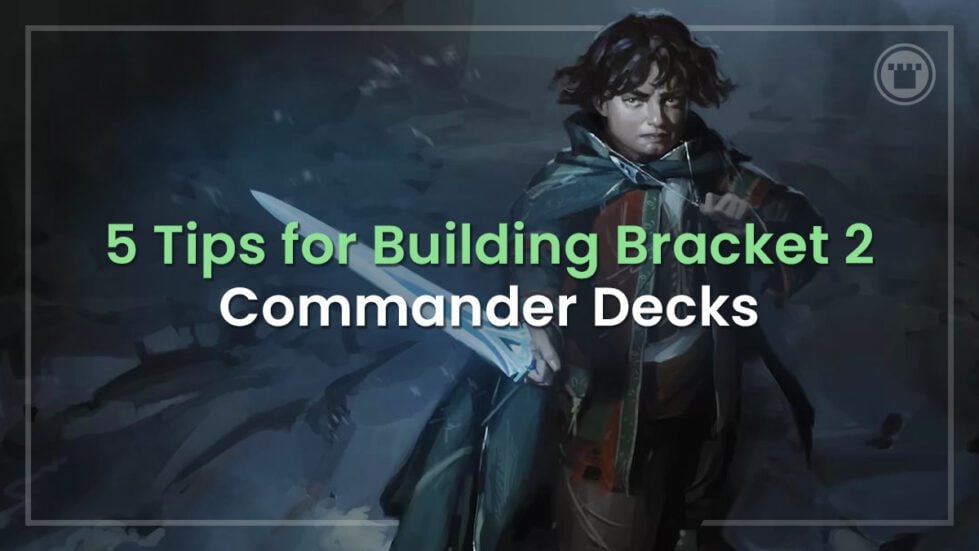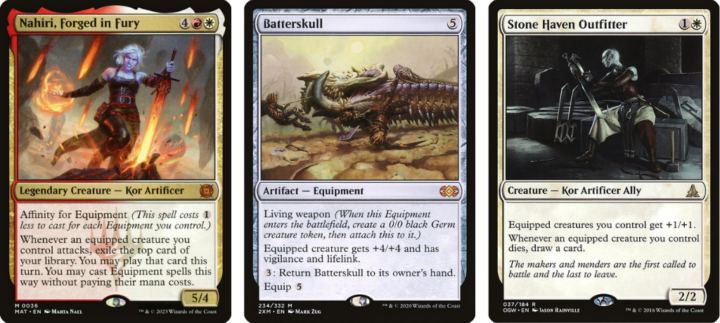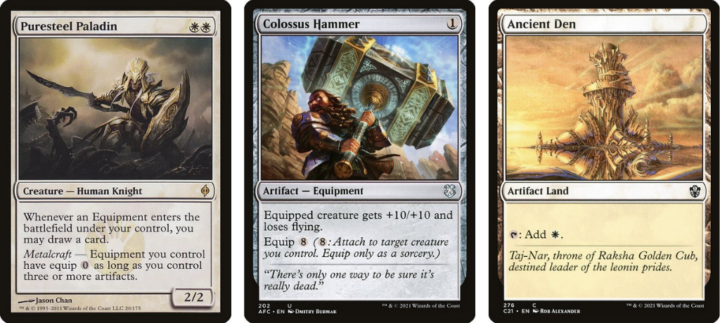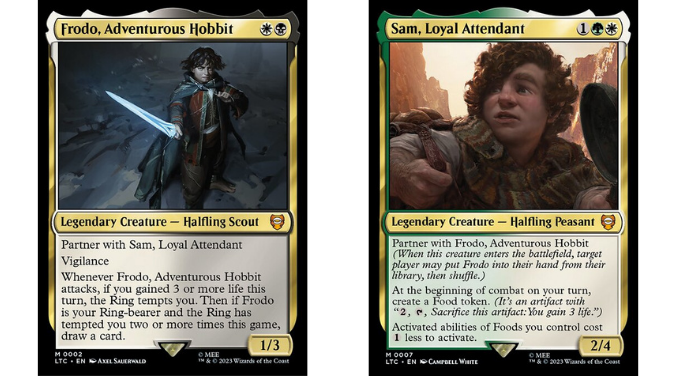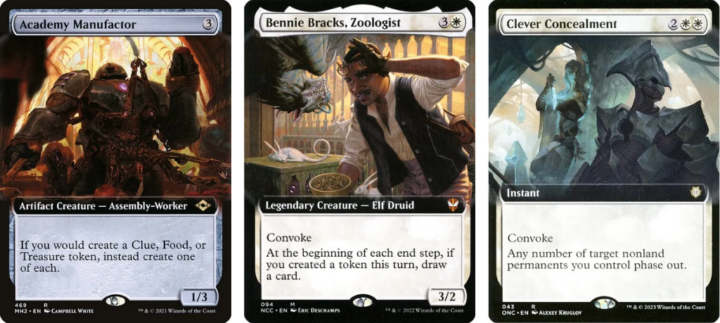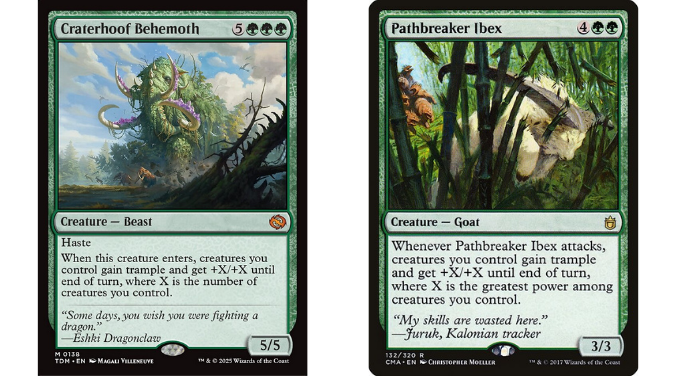Building a deck that can jam with other Bracket 2: Core decks can sometimes be more challenging than building something more powerful. Commander Format Panel member Kristen has some tips for building something more casual that plays well against modern precons and players new to Magic.
A lot of feedback I get about Commander these days is that it’s often harder to power-down a deck than to power it up. This might seem a little confusing, but if you think about it, people kinda have a point. Deciding whether a card is more powerful to upgrade your deck is pretty straightforward. How do you decide which cards are too powerful, or against the spirit of building a lower power deck?
Well, the Game Changers list is one tool at your disposal. These cards are at the pinnacle of powerful, frustrating to play against, or are generally game-warping. If there’s one thing the Bracket System Beta has done well, it’s to reduce the likelihood that players running lower power decks will be met with the frustration of a Turn 3 Rhystic Study.
But how else can you match the vibe of Bracket 2: Core?
The top-level readout of this bracket is:
Decks are focused, even if every card choice isn’t the highest power, and comparable to an average precon. Wins are often telegraphed or incremental.
So, with that in mind – how do you keep things in check? How do you keep things more relaxed?
CONSIDER THEMATIC CARDS
The first thing to do is consider running thematic cards. This is an easy way to stop yourself just jamming with every best-in-slot card, and as long as you still have access to card draw, removal and such, your deck can still function just fine – including setting up for a win. It’ll just do it at a more relaxed pace, and without making folks across the table panic about you winning before they’ve gotten to really set up.
If you sit down to build Nahiri, Forged in Fury, you could build a really strong deck without much effort. If you wanted to keep her in Bracket 2, then stick to a theme. Run only Living Weapon Equipment (to show her link to Phyrexia in the story), other equipment that makes a token when it comes in, and for support creatures, stick to Kor, native to Zendikar. There’s plenty of cards to fill out a decklist, and when you avoid cards like Brotherhood Regalia, Puresteel Paladin and Excalibur, Sword of Eden, you can slow your roll.
DON’T CHOOSE MANA AND CARD ADVANTAGE IN THE COMMAND ZONE
One of the easiest ways to power-down your deck for Bracket 2 is to avoid picking the more consistent forms of Card Advantage or Mana generation in the command zone. While Nahiri gives card and mana advantage – and can be very strong when you’re playing the best cards – she is still relying on random luck to get what you need, and if you stick to a strong theme, you can also reduce the “spike” of hitting best-in-slot equipment, meaning your average draws are at both a lower – and a more consistent – power level.
Conversely, let’s look at Kassandra.
Last year, I built what is considered a Bracket 4: Optimized Kassandra, Eagle Bearer deck. After it lost Dockside Extortionist, Jeweled Lotus and Mana Crypt in the bans, I powered it down a little, and tried again for a deck that I thought might fit better in Bracket 3: Upgraded.
Well, it turns out that that deck might still just be a Bracket 4 deck, because having card draw and a tutor in the command zone that always gives access to Double Strike and more card selection is just kinda… good?
If you build the deck right – like I have done, playing popular Equipment cards like Colossus Hammer and Steelshaper’s Gift – it’s entirely possible to just annihilate a player as early as turn 5 with the right draws.
Take this totally reasonable sequence:
- Land, Colossus Hammer
- Land, Puresteel Paladin
- Land, Kassandra, tutor up Spear of Leonidas into play. Draw a card off of Puresteel Paladin.
By turn three, you have all of the pieces to kill a player. If you played an artifact land on Turn 1 or Turn 3, you could have Metalcraft to equip both the Spear and Hammer, meaning you’re able to hit someone for 24 damage on Turn 3. Even if we ignore the nuts draw, it’s still possible with combinations of Sigarda’s Aid, Excalibur, Wrecking Ball Arm, Bruenor, and Stoneforge Mystic, to start knocking out players by turn 4-5.
As it stands, that means this optimized version of the deck is indeed still better suited for Bracket 4, with Game Changers like Deflecting Swat ready to shore up the defenses.
Would Kassandra ever be appropriate for Bracket 2? I don’t think she would, as she provides way too much consistency – even if you had no Game Changers, the deck would likely still fall into Bracket 3. What if you stuck to a theme with only Assassin’s Creed or Theros set cards? You’re getting closer, at least. Playtest it!
Many other Commanders make you ask the same question. Is Pantlaza ever fair in Bracket 2 when you’ve added stronger cards like Etali, Primal Conqueror, some flicker effects, and maybe a cheeky The Great Henge? What about a Jodah, the Unifier deck with budget Legendaries?
To figure out if your Commander is too good for the average Bracket 2 game, you need to ask yourself questions like “is this Commander making my deck too consistent?” and “Do I just steamroll this pod if nobody has removal?”. Remember, plentiful removal and interaction isn’t the hallmark of Bracket 2. You’ll face that Litmus test in Bracket 3.
As far as ways to power-down goes, simply choosing a “sub-optimal” Commander is a surefire way to reduce the potency of your deck.
DITCH THE STAPLES
So, if you are sticking to a theme already, you’ll naturally start to eschew adding staples. If you’re not convinced, then let me give you some examples.
If you’re playing a Frodo and Sam deck, then adding staples like Delighted Halfling and Boromir, Warden of the Tower is not only fair – it’s encouraged. And, provided your upgrades are along a similar trajectory, you’re likely to keep the deck firmly within the bounds of Bracket 2. Even by editing a precon, you might not have boosted it up to Bracket 3 – that’s especially the case if you stick to on-theme “upgrades”.
However, the moment you start to add staples like Academy Manufactor, Bennie Bracks, and Clever Concealment, you start to move firmly toward Bracket 3. You’re selecting synergistic cards that are in many cases among the best of those effects (if not the best), and you’re moving away from theme and closer to just making your deck the best it can be.
If you wanted to sit down and make a case for Clever Concealment symbolizing the Hobbits’ Elven Cloaks, I’d probably laugh and give you that one. But otherwise, you’re now filling your deck with synergistic and strong cards.
AVOID EASY WINCONS
Every deck needs wincons, but as discussed above, having access to the most efficient wincons like tutoring for Spear of Leonidas for double strike every game isn’t really in keeping with Bracket 2.
If you really want to keep your deck’s power in check, then choose suboptimal win conditions. While it’s easy to see that 2-card combos aren’t for Bracket 2, you could make your wins even harder to achieve. Instead of running three card combos, maybe make sure your combos involve four cards, with none of them being your Commander.
Considering avoiding Craterhoof Behemoth and picking one of the many adjacent versions of this effect instead. If your Commander gets large, maybe Chandra’s Ignition is too easy. Making lots of tokens? Purphoros might be more Bracket 3 speed, so opting for an Impact Tremors instead might slow your roll a little.
CHOOSE LESS ETBs, AND LEAVE YOURSELF WIDE OPEN TO WRATHS
Enters-the-battlefield effects are the bread and butter of modern Magic. The game has long since shifted into one where you get guaranteed return on an EtB effect for your mana, even if you lose the creature.
It’s entirely possible to build your decks to prioritize EtB creatures, and if you have access to any ways to flicker your board or recur things from the graveyard, you’re suddenly racking up the value.
One more way to reduce the overall strength of your deck is to opt instead for more creatures and effects that have to survive a rotation around the table to begin accruing you value. Taking more creatures with static rules effects, rather than focusing on EtBs, is a way for your deck to rely on building an engine more than just accruing value off of playing whatever you draw into. This leaves it weaker to boardwipes, which is a super healthy balancing point for lower power deckbuilding. And don’t even think about then running even more protection spells to shore up that weakness – just stick to a couple. Give people outs to beating you.
END STEP
Building a less-powerful deck can be a real challenge, especially if you’re a veteran Magic player. You’ll likely have a deckbuilding style, and know exactly how to make the most of what you’re playing with. By keeping the above tips in mind, you can build successful Bracket 2: Core decks that can jam with newer players and not risk snowballing quite so hard in the face of sparse interaction.

Kristen is Card Kingdom’s Head Writer and a member of the Commander Format Panel. Formerly a competitive Pokémon TCG grinder, she has been playing Magic since Shadows Over Innistrad, which in her opinion, was a great set to start with. When she’s not taking names with Equipment and Aggro strategies in Commander, she loves to play any form of Limited.

